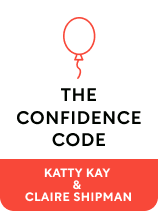

This article is an excerpt from the Shortform book guide to "The Confidence Code" by Katty Kay and Claire Shipman. Shortform has the world's best summaries and analyses of books you should be reading.
Like this article? Sign up for a free trial here .
Is confidence a matter of nature or nurture? What role does the environment play in confidence development?
Confidence isn’t a matter of nature versus nurture—both biology and environment are implicated. Scientists estimate that around 25-50% of confidence stems from our genes, and there is also a lot of evidence in favor of nurture.
In this article, we’ll look at what role the environment plays in confidence development, focusing on the environmental factors of self-confidence that affect women, who often lack the self-belief men have.
Influence #1: Expectations of “Goodness”
One of the main environmental factors of self-confidence is behavioral expectations. Starting in elementary school or even earlier at home, children, especially girls, are rewarded for being “good”—quiet, neat, compliant, and well-behaved. Encouraging goodness discourages confidence-building behavior like taking risks, being rowdy, or teasing and roughhousing (both common ways boys play). These expectations affect girls more than boys because:
- They’re more often directed at girls. Society expects girls to be good.
- Girls learn to pick up emotional cues faster than boys. They’re capable of being compliant at a younger age, and because being compliant comes with approval and rewards, they pursue it.
This leads to girls taking mistakes personally—if they do something wrong, it’s because they’re not skilled enough. Boys, on the other hand, attribute mistakes to not trying hard enough.
Influence #2: Sports
The second influence is sports—sports are good for building confidence because playing them involves competing, winning, and losing, which have parallels with victories and setbacks throughout life (such as making a mistake at work.)
More girls play sports than ever—in 1972, Title IX legislation required U.S. public schools to spend the same amount of money on boys’ and girls’ athletics and as a result, from 1972 to 2011, girls’ participation in high school sports increased tenfold and in college, sixfold. Girls involved in team sports are more likely to find jobs, work in male-dominated industries, and graduate from college.
On the other hand, some things haven’t changed—fewer girls play sports than boys, and girls are six times more likely to quit their team than boys are. This is because girls’ self-esteem drops more than boys’ does during adolescence, and losing makes them so uncomfortable they stop competing.
As a result, when girls who don’t play sports grow up, they have more difficulty shaking off setbacks and recovering from failure in life.
Influence #3: The Rules Change
When girls grow up and enter the workforce, they encounter the third influence—changing rules. Unlike in the classroom, academic achievement and competence are no longer the requirements for success. Instead, success in the workplace requires self-promotion, political savvy, and pushing beyond nos. Many women aren’t skilled in these areas.
- For example, it took Valerie Jarrett 10 years to make bold requests. She was working at the mayor’s office in Chicago and a client told her to ask for a promotion because she was doing such complex work. The client encouraged her for months and finally, Jarrett asked. Her boss quickly agreed—it wasn’t nearly as big of an ask as Jarrett thought it was.
Influence #4: Stereotype Threat
The fourth influence is stereotype threat—when there’s a stereotype associated with a minority group, members of the group feel pressure to embody the stereotype.
- For example, Harvard University gave 46 Asian-American women three questionnaires. One was neutral, one reminded respondents that Asians were stereotypically good at math, and the last reminded respondents that women are stereotypically bad at math. Then, everyone took a challenging math exam. The women who had completed the neutral questionnaire scored an average of 49%, those who filled out the second questionnaire scored 54%, and those who answered the third scored 43%.
There are many stereotypes associated with women that reduce confidence. (Shortform example: “Throw like a girl” suggests that women aren’t as skilled at baseball as men are.)
Influence #5: Systemic Barriers
The fifth influence is systemic barriers—women don’t have access to the same resources as men in the U.S.:
- American women earn more degrees than men and according to the Global Gender Gap, the U.S. is first in equality of educational attainment. There’s no lack of competence—but the U.S. 67th in gender pay equality and 60th in political empowerment.
- There’s no national paid maternity leave policy. (The U.S., Swaziland, and Papua New Guinea are the only three countries in the world that don’t have a policy.)
Influence #6: Body Image Expectations
The sixth influence is body image—women’s confidence is strongly tied to physical appearance, and they’re judged on their appearance more than men are. Women who don’t meet society’s beauty standards have a harder time in life.
- For example, obese girls are less likely to attend college than non-obese girls, but obese boys are just as likely to attend as non-obese boys.
On the other hand, women who do meet society’s beauty standards are judged too.
- For example, when Yahoo’s CEO Marissa Mayer modeled for Vogue, critics judged her for wasting time she could have been putting toward her job.
We judge ourselves too—women are quicker to criticize their appearance than men are to criticize theirs, and women tend to be so self-critical they erode their own confidence.
- Example #1: 90% of women want to change something about their physical appearance, while only 2% think they’re beautiful.
- Example #2: When public speaking coach Babara Tannebaum videotapes her students so they can watch their own performances, the women focus on what they looked like rather than how much eye contact they made or how well they projected. The men occasionally comment on their appearance, but it never sidetracks them from assessing their public speaking skills.
Influence #7: Self-Imposed Obstacles
In addition to the six external factors that inhibit women from developing confidence, there are also several self-imposed obstacles that they have more control over:
Obstacle #1: Desire for Likability
Many women would prefer to be liked rather than respected. (And there is some societal pressure—society expects women to be likable, so it’s relevant to success.) Striving to be liked can kill confidence and deter women from using tough or aggressive strategies that come with the possibility of criticism.
- For example, imagine you’re a woman who’s just graduated from college and been offered your first job. The salary’s low, but you figure you’re lucky to have even gotten an offer, and you don’t want to offend anyone by asking for more. (A man would ask, and this is partly responsible for the gender pay gap.)
Obstacle #2: Ruminating
As you learned in Chapter 3, women have active brains and often overthink things—obsessing over things they feel they’ve done wrong and how other people interpreted the situation, focusing on problems instead of solutions. Or, they’ll circle around something they want to do but haven’t yet mustered the courage to do.
- For example, a woman might obsess for days about whether to get a new haircut.
Additionally, women focus on emotional connections more than men, which can be a strength—women are good at building relationships—but also contributes to overthinking.
Obstacle #3: Internal Attribution
Women tend to take the blame for things that go wrong but attribute things that go right to external sources.
- For example, psychologist Dave Dunning found that when Cornell’s math Ph.D. program starts to get difficult, women tend to think they’re struggling because they’re not smart enough. They ignore the difficulty of the course and even how much effort they put in. (Men think they’re struggling because the course is hard.)
Obstacle #4: Perfectionism
Perfectionism is the fourth and biggest of the self-imposed roadblocks—perfection is unattainable, so if that’s the standard you must meet to be confident, you’ll always feel inadequate and won’t take action. Additionally, perfectionism doesn’t just get in the way of confidence, it gets in the way of achievement—you won’t start work unless you feel perfectly ready to take it on, and you won’t finish it either.
- For example, a Hewlett-Packard study found that men applied for promotions when they met 60% of the requirements, but women only applied when they met 100%. As women weren’t even applying for certain jobs, they had no chance of getting them.

———End of Preview———
Like what you just read? Read the rest of the world's best book summary and analysis of Katty Kay and Claire Shipman's "The Confidence Code" at Shortform .
Here's what you'll find in our full The Confidence Code summary :
- An examination of the art and science of confidence
- Why women have more trouble accessing confidence than men
- How to build confidence in yourself and others






